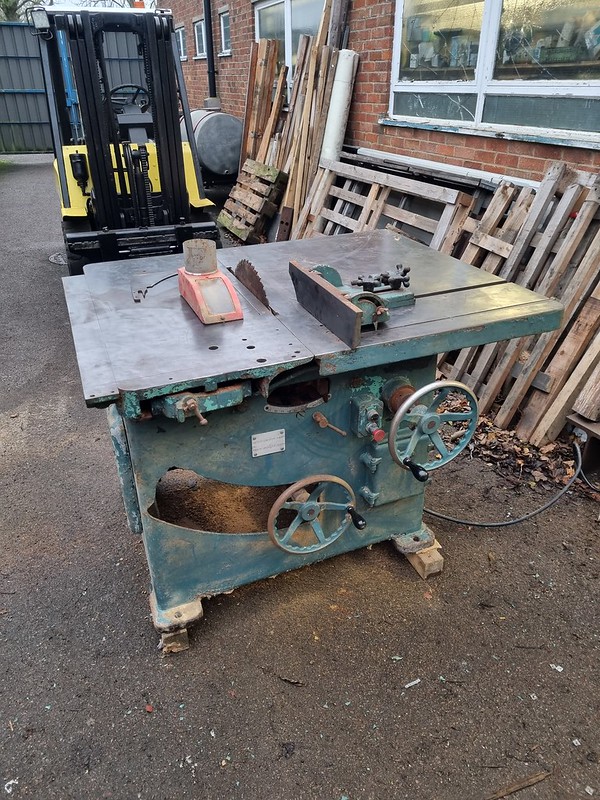Been busy with lots of stuff recently, but thought this one was worth sharing. Right back at the start of this thread (2018) I posted about a workshop of a farmer friend I'd bought. I got most of the machines out with a tractor, but there were still two big table saws. Since then, we've had a pandemic, the owner's alzheimers deteriorated and he passed away and every time I've cleared a space at work to bring them back, something else came along to fill it. Last weekend I finally recovered the first, a Sagar LT. It's basically Sagars version of a wadkin PK - sliding table, 18" blade, heavier than depleted uranium, that sort of thing. Went very smoothly - pallet truck to the trailer, then winched it straight in. No drama.
 Sagar
Sagar
Seeing it in the trailer gives some scale as to just how monstrous it is. The green T shaped casting is the outrigger leg for the sliding table extension.
 Sagar
Sagar
A LOT of hooving, cleaning and wire wheeling and here we are:
 Sagar
Sagar
 Sagar
Sagar
 Sagar
Sagar
Mechanically it all works - table slides, blade goes up and down and tilts, she spins up and runs forever when you turn it off - the bearings are amazing! Its actually in really good shape - even the original switchgear which is pretty unusual these days. I'm getting some copies cast of the sagar badge and spanner rack, which I thought was super cool, the moment I saw it. Nice to have saved it from the scrap man anyway. Next up is the wadkin BGP panel saw, which is probably an even heavier lump to get out.
 Sagar
SagarSeeing it in the trailer gives some scale as to just how monstrous it is. The green T shaped casting is the outrigger leg for the sliding table extension.
 Sagar
Sagar A LOT of hooving, cleaning and wire wheeling and here we are:
 Sagar
Sagar  Sagar
Sagar  Sagar
SagarMechanically it all works - table slides, blade goes up and down and tilts, she spins up and runs forever when you turn it off - the bearings are amazing! Its actually in really good shape - even the original switchgear which is pretty unusual these days. I'm getting some copies cast of the sagar badge and spanner rack, which I thought was super cool, the moment I saw it. Nice to have saved it from the scrap man anyway. Next up is the wadkin BGP panel saw, which is probably an even heavier lump to get out.



























































